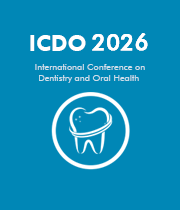Title: Physical and histochemical properties between porcine and human auricular cartilage
Abstract:
This is an important paper reporting the Physical and Histochemical Properties between Porcine and Human Auricular Cartilage. This study provides you that pig ear cartilage could be a useful material for the graft. Details are below.
Background : Recent studies using the pig tissue and organ as material of the xenograftis progressing very actively. In this study, we analyzed the characteristics of porcine and human auricular cartilages, and evaluated the possibility of using as a graft substitute.
Method : The weight change of each cartilage was measured by addition of collagenase to determine degree of collagen degradation. The porcine and human auricular cartilages were compared by histological examinations; hematoxylin& eosin (H&E) staining and keratin sulfate, chondroitin sulfate, chollagen II, and hyaluronic acid immunohistochemical (IHC) staining. After sterilization with gamma irradiation, glycosaminoglycan(GAG) assay was undergone, and cytotoxicity test and proliferation test were performed.
Result : After collagenase treatment, the weights of cartilages are gradually decreased to an average of 19.26% and 31.65% after 15 days, respectively. In histologic examinations, porcine and human auricular cartilages were covered with perichondrium, and chondrocytes and chondroblasts were observed as cellular components. In IHC staining, we confirmed that extracellular matrix (ECM) mainly composed of collagen II, keratin sulfate, chondroitin sulfate, and hyaluronic acid. The amount of GAGs in porcine ear cartilage was maintained about 70.1% even after sterilization. There was no toxicity to the cells, and it did not influence the cell proliferation
Conclusion : Physical and histochemical properties between porcine and human auricular cartilage were very similar. The porcine cartilage was mostly made up of collagen. ECM was mainly composed of collagen II, keratin sulfate, chondroitin sulfate, and hyaluronic acid. After sterilization, the amount of GAGs was maintained about two thirds, and there was no cytotoxicity and disturbance of cell proliferation. Therefore, porcine auricular cartilage is thought to be used as an alternative graft material




